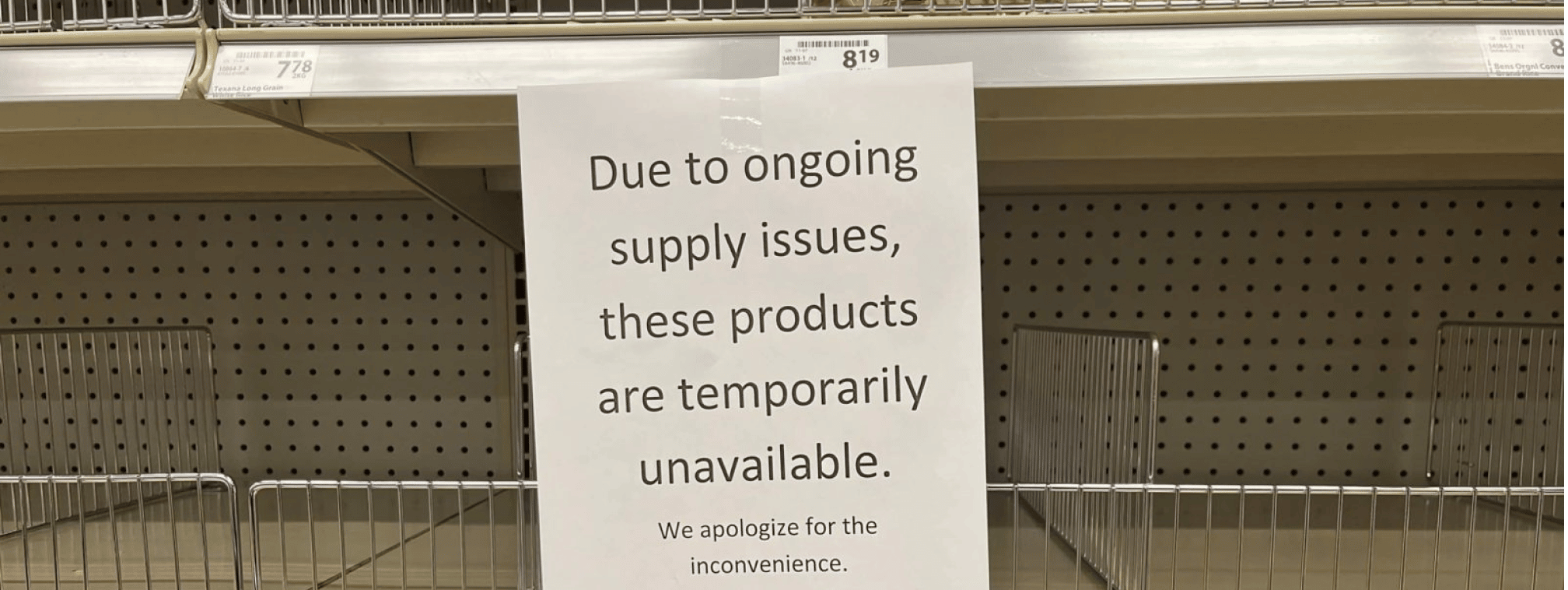blog
Managing last-minute variations in demand
Mar 3, 2022

The past two years have taught us that a strong and responsive supply chain is vital for success during sudden disruptions and changes in trading environments. Admittedly, not every supply chain challenge is going to be as extreme as the Covid-19 pandemic and the ensuing worldwide lockdown. However, the fact remains that an agile supply chain has its enhanced ability to react to sudden changes in supply and demand.
What is an agile supply chain?
At its most basic level, an agile supply chain is one that emphasises flexibility. Becoming agile means organising a company to be able to respond quickly to changes in demand over time and increasing the responsiveness of the entire supply chain. The obvious benefit of this is that it makes the supply chain less vulnerable to sudden changes, much like a flexible foundation makes a building less vulnerable to earthquakes.
Agile supply chain strategies
Companies have several business levers available for improving demand-side responsiveness.
Integrated planning and execution allows information to move quickly amongst relevant departments, regardless of the physical distance between them.
As the demand from the market or end consumers increases, that demand information is collected, analysed, and transmitted through collaborative planning that includes all departments within the organisation who have the capacity to fulfill that demand. Virtual integration across a supply chain also allows for faster exchanges of information between all key stakeholders.
Demand-driven manufacturing is a current buzzword in industry, used to describe a process where production is driven primarily by actual customer orders, rather than sales forecasts. To achieve this, it’s essential to be able to integrate information about demand from end consumers with info from factories and suppliers to allow companies to dynamically adapt their plans and manufacturing.
Let’s take a look at a few ways of taking advantage of all the potential benefits:
- Creating buffers for critical components: rethinking the strategic positioning of buffers and taking a more dynamic approach to defining safety stocks and resupply plans – taking factors such as orders in hand, forecasts, trends and market variability into account – is the first step in reducing lead times and is a big help in reacting rapidly to demand variations.
- The sorting heuristics must make it possible to have an allocation sequence for production according to free parameters; ordering a production run means assigning it one global priority based on attributes like date or delivery period, item/group priorities and more.
- Reducing the frozen period (the period when factory schedules can no longer be modified): the more companies can shorten this, the more flexible, agile and responsive they can be to their customers.
- Labour interchangeability and rapid line redeployment: the possibility to rapidly switch from one production setup to another lets companies refocus on the most popular products and top sellers, reducing potential lost sales.
- Factory progress visibility: getting reliable, accurate information from critical factories and suppliers helps provide a complete view of work in progress.
- Real integration with critical suppliers: the ability to transparently exchange upstream plans allows transferring consumer demand to the supply chain, with the possibility of defining strategic stocks for critical components with longer lead times.
The goal of an inventory management system is to equip a company with the levers that allow it take appropriate action when there are sudden high-priority orders, shifts in consumer purchasing forecasts or delays on supply and production.
Requirements for agile supply chain
Ensuring that material flows between actors in the network are coordinated requires dedicated computer control systems that can synchronise upstream phases and downstream processing to avoid unnecessary acceleration and minimise unused stock. These IT systems can be implemented in successive steps with a greater or lesser degree of integration/automation according to the manufacturer’s specific needs.
This also requires tools capable of managing demand, planning, scheduling and production, as well as supplier control. And, in order to be able to generate real value, they must all integrate with the ERP system.
Here are some basic concepts of demand-driven architecture:
- The demand management system integrates high-frequency orders/sales and generates a new forecast, up to several times a day.
- The inventory management system allows dynamic management of buffers and replenishment plans.
- The planning system filters out finite-capacity orders before launching the MRP – working on an 80–90% feasible plan is definitely better than feeding the scheduler with a production order portfolio generated with infinite capacity!
- The factory scheduler operates exclusively on the released orders generated by the MRP system, with the goal of generating a detailed, short-term plan that takes into account constraints, optimisation rules and the real-time situation of production and suppliers.
- The manufacturing execution system (MES) integrates real-time information on the status of orders, any delays and/or shortcomings, allowing synchronisation with the other levels, increasing visibility and improving the handling of deviations.
- The supplier management system also provides greater visibility over any delays and shortcomings, with the ultimate goal of finding alternative ways to fulfil orders.
The interoperability of the different systems plays a central role in ensuring the sharing of information between departments inside and outside the company, as last-minute variations must be considered every day through cost–benefit analyses and shared with the different actors and tools.

How To Improve Resilience And Grow Your Business Sustainably
Unexpected disruptive events in manufacturing always interrupt normal production conditions and cause production loss. How resilient are your planning and manufacturing processes? Are you prepared to deal with the unexpected?
Take the quiz below to find out how your organisation stacks up in the face of crisis and get expert insights on how to make your manufacturing more resilient.